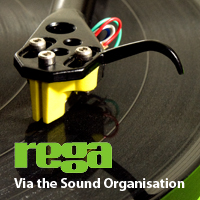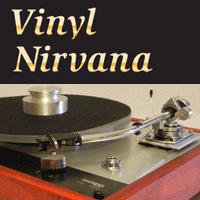Cat Stevens – Tea for the Tillerman
After months of ballyhoo, setbacks, and hokey YouTube coverage of Mikey Fremer and Chad Kassem’s love fest (the analog aficionados dance around with headphones and sing), Quality Record Pressings’ first major release is available. Does it match up to the hype? As Eric Cartman from South Park likes to say, “mostly.”
To gauge its merit, we compared the new QRP pressing to a number of existing versions: A pristine copy of the first issue Island Pink Label, a first issue tan-label A&M pressing, and both Mofi releases—the standard vinyl and the UHQR. While we feel that more treble extension and a smoother overall tonal balance grace the Pink Island LP, the QRP is definitely the one to beat in every other area.
This is a beautiful record to hear. Surfaces are CD-quiet. Music emerges from between your speakers in a lush, full-bodied way that will convince those with top systems that they are experiencing a live, intimate performance. Much like a Patricia Barber or Diana Krall record, it will make average systems sound much better than their owners might have thought possible. We’ll be hearing this one for years to come at various audiophile shows. Bottom line, if you love Tea For The Tillerman, this is the one you want.
I immediately notice that the QRP LP’s long instrument decay and tight, powerful bass offer more grip than my UHQR. My colleague and resident record collector Tom Caselli confirms the same observation with the Pink Island pressing and found the A&M pressing more congested than either version. He mentions that the QRP pressing boasts more inner detail, making it easier to follow the lines of both guitarists throughout and discern the interplay of the background vocal tracks. From my listening chair, it all sounds wonderful.
For those not following QRP’s development, Acoustic Sounds proprietor Kassem spent a king’s ransom to get the plant up and running, addressing many technical issues that always plague such ventures. Rumor has it that the first batch of Tea For The Tillerman LPs got scrapped because they weren’t up to Kassem’s high standards. That’s admirable. And consequently, this record stands as the benchmark for LP quality.
Collectors will appreciate the high quality of the album jacket, featuring heavy stock with a thick semi-gloss coating. A four-page foldout includes photos of the “absolute” original master tapes and a few good quotes from George Marino at Sterling Sound. He discusses the improvements in lathe technology since the first Cat Stevens records were cut at Sterling in the early 70s.
Our research indicates that a clean, early stamper Pink Island copy can easily set you back $200. So, $30 for a brand-new record is indeed a bargain. Yet, praise for sonic quality aside, who really cares about Tea For The Tillerman? Considering that recent big sellers in the vinyl market come from the Fleet Foxes and Bon Iver, Kassem couldn’t be more clueless in terms of catalog selection. Sure, 1500 of these will sell like hotcakes, and at least half of the audiophiles buying this record will feel as if they’ve gone to heaven. But this strategy won’t get many people under the age of 55 years old excited about analog. I purchased this LP solely out of curiosity and my duty as an audiophile journalist. I won’t obtain Kassem’s other two Stevens titles.
However, to give credit where it’s due, the sound quality on this record is the best I’ve ever heard. If all the LPs in my collection sounded this good, I’d never have bought a CD player. TONE tips its proverbial hat to the associates at QRP—masters of their craft. But here’s to hoping that something more contemporary is pressed there in months to come rather than just another string of tired incumbents.
The QRP score? Audiophiles 1, New Music Lovers 0. —Jeff Dorgay and Tom Caselli






